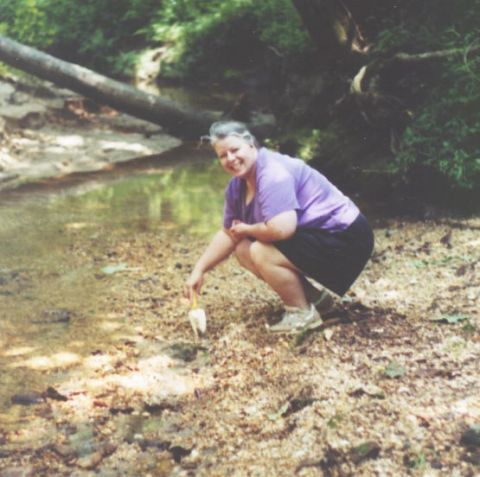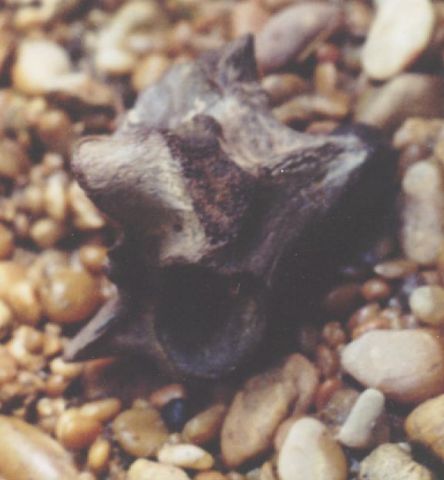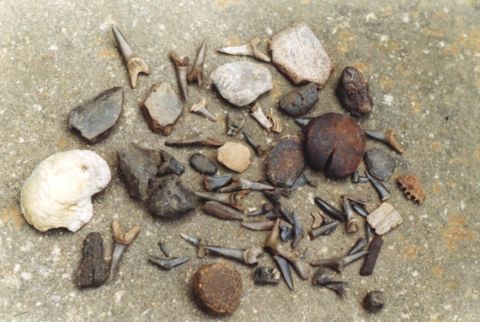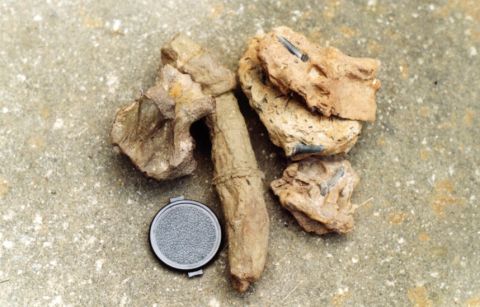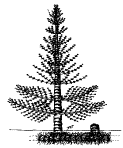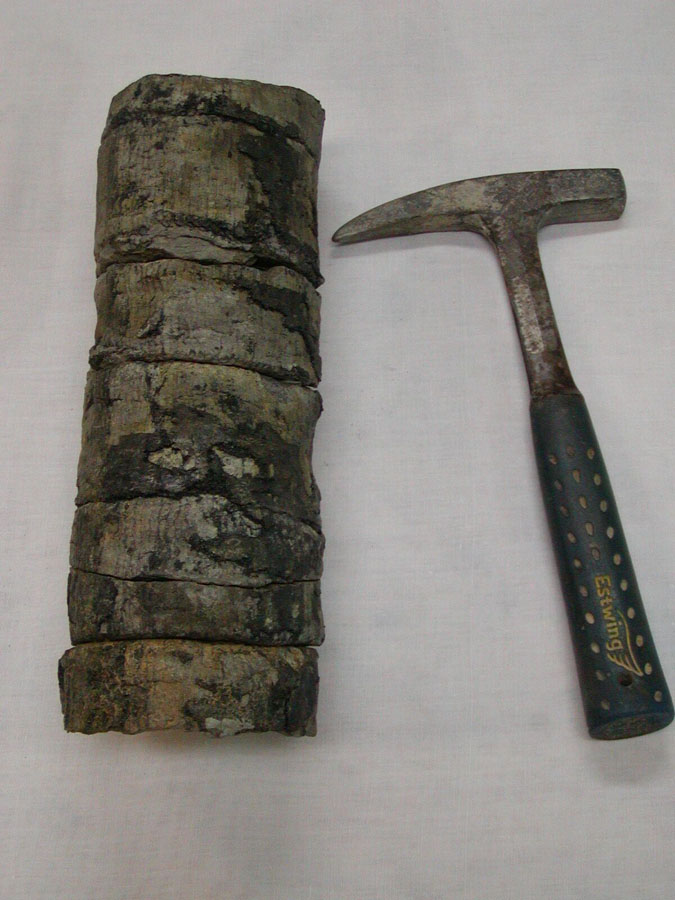Discussing the day's finds.
2003
February 2, 2003 - Cretaceous Fossils, Lowndes Co, MS
(Photos courtesy Greg Mestler.)
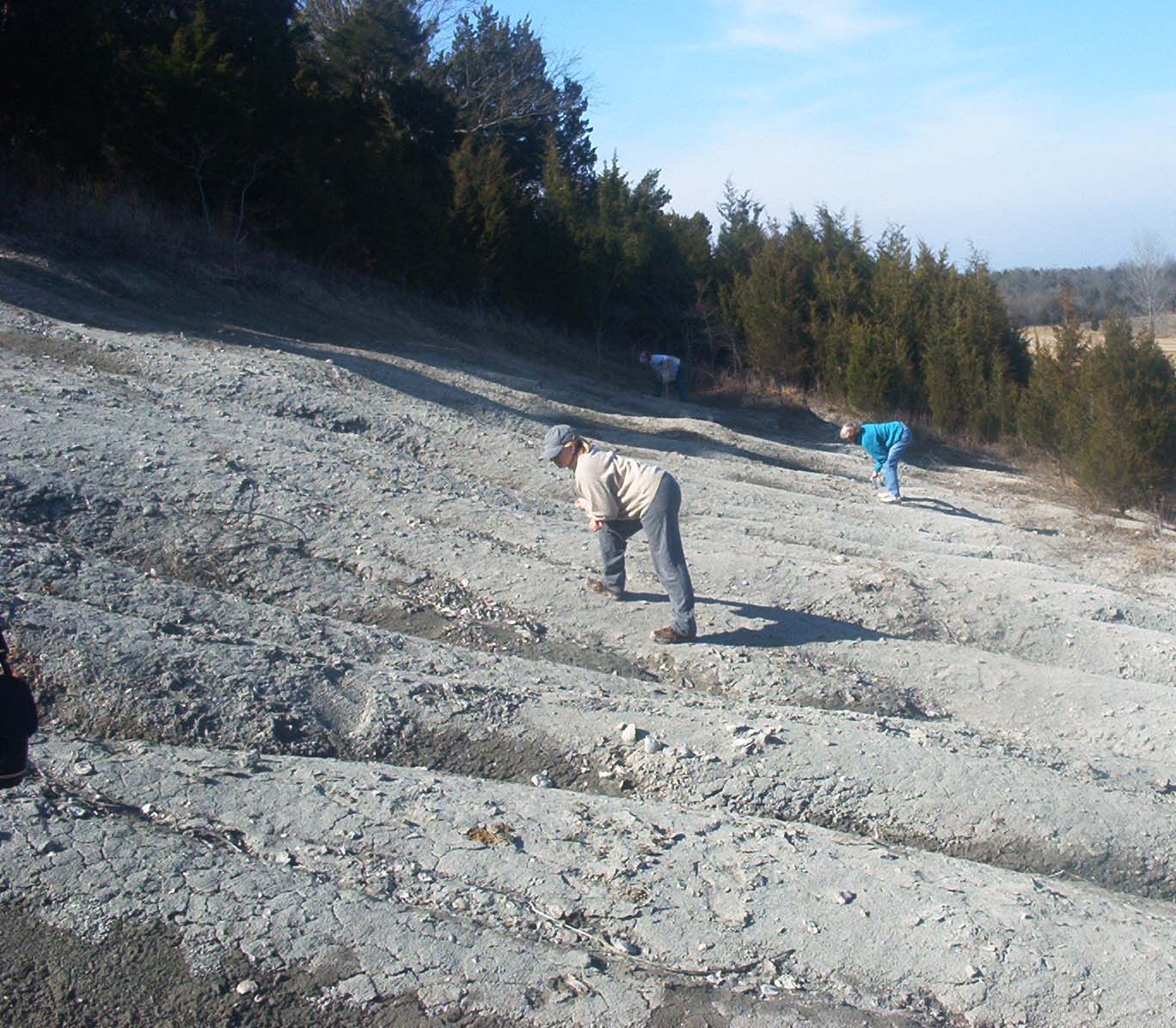
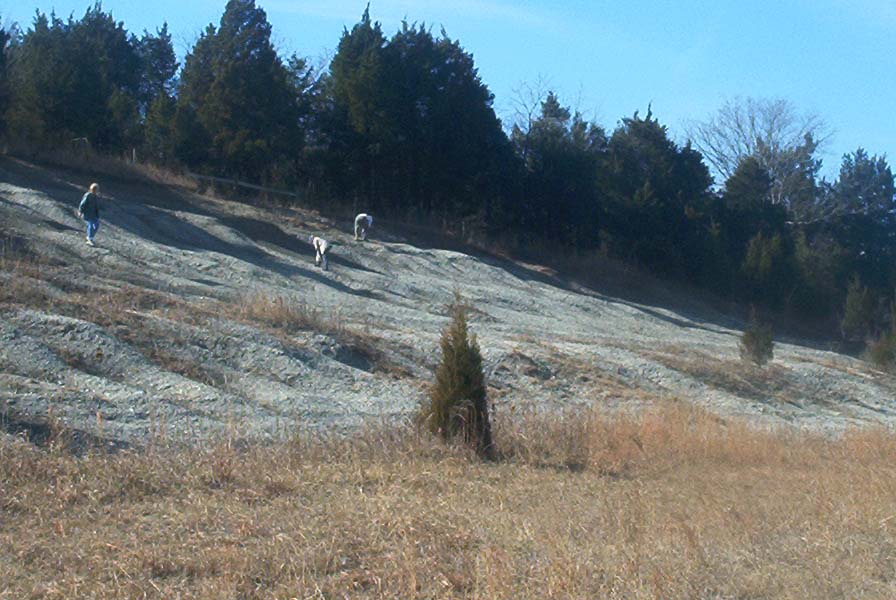
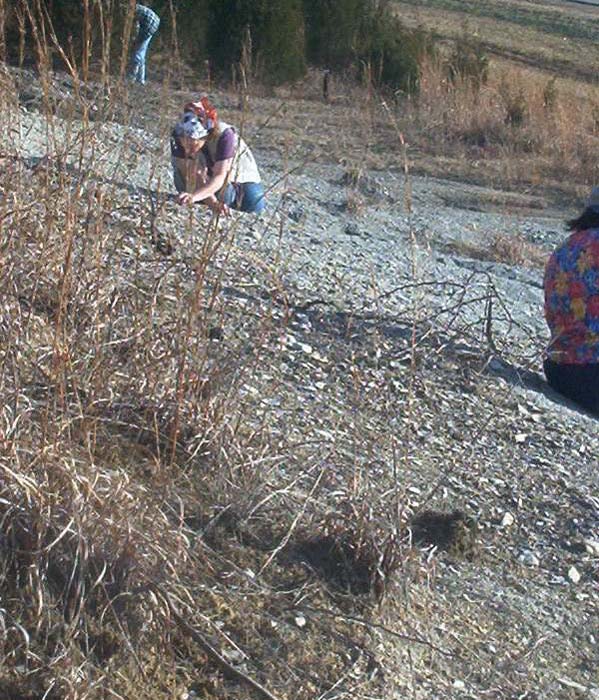

February 16, 2003 - Pickens Co, AL
(Photo courtesy Greg Mestler.)

March 29, 2003 - Morgan and Lawrence Co, AL
This month, BPS visited the "education center" of a local Jefferson County quarry, where school children are taught about quarry operations in a nice building with a great view of the quarry, and a small working model of the conveyor activity. Inside, there were numerous fossil displays exhibiting fossils from many of their quarry locations around the south. Upon seeing several whole crinoids on display, we were practically drooling to get going on the collecting trip. The group then drove to a quarry in Morgan County, Alabama. This was a site where no one had collected before, other than quarry personnel, and what a fine group of specimens were found! Large blastoids, crinoids, horned coral, and archimedes were our primary finds. At least 6 whole crinoids were found, and the excitement of the members upon finding yet another of these wonderful specimens was very exciting! Due to the unusually chilly, overcast weather as compared to the prior few weeks, no rattlesnakes were spotted, though our leader said he had encountered 4 of them last summer.
(Photos
courtesy Ron
Beerman, Bill
Cunningham, Greg Mestler & Vicki Lais.)

Several whole crinoids were found on the trip; this one by Vicki.

Several BPS members diligently searching the spoil piles.

Greg dissolved a slab of limestone he took home and found these
crinoids
inside.

Numerous blastoids, crinoid parts, and horned coral were found.

Crinoids found by Jan and Claire.

Found by Ron.

Found by Bill.

The view from the collecting site.

Outcrop of rugosa coral.

Found by Ron.
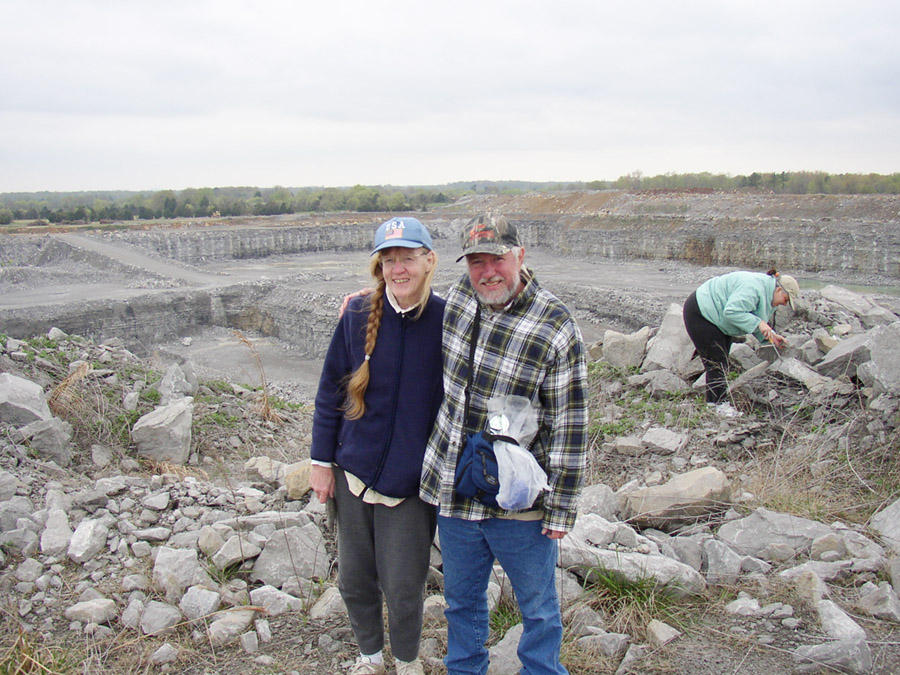
Bill and Adele in foreground, Leisa in background.


Looking
in all the cracks and crevices.

More of Ron's finds.
Our third stop of the day was at a roadcut in Lawrence County, Alabama, where numerous specimens of rugosa coral, including whole coral heads the size of boulders, were found. There was even a small cave-like cavity in the ground that had been uncovered, where one could peer in and see a small, undisturbed area of coral in place. Both collecting sites were in the Bangor Limestone.

More rugosa coral, from the second site of the day.
April 19, 2003 - Butler Co, AL
BPS visited a new location in Butler County this month for our field trip. The creek was shallow, making screening and hiking in the creek particularly easy. A number of shark teeth were found, including Odontipus robusta, scapanorhynchus and odontaspis elegans, and bones and teeth that we really wanted to pass off as fossils. Unfortunately, they were recent, from the wild pigs that roam on the property. On the ridge above the creek was a "bald" area composed of limestone where a number of nautiloids (Centroceras marcellensis), gastropods (Lophospira milleri), sea biscuits (Clypeater rogersi), conglomerate material containing numerous Turritella, oyster and other shells were found. We hope to go back to a different site on this same property later in the summer when the roads and creek are drier.
(Photos courtesy Ron Beerman & Greg Mestler.)
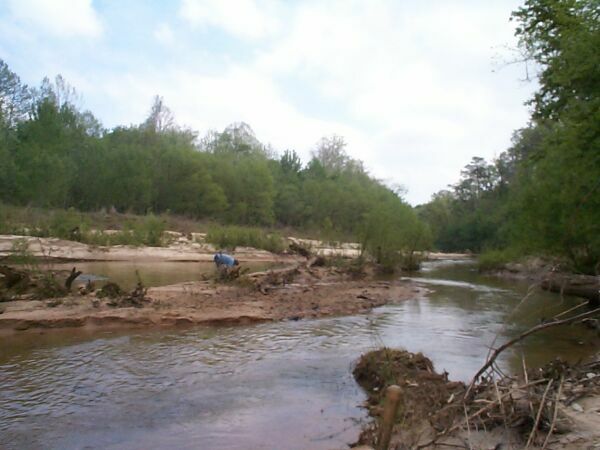
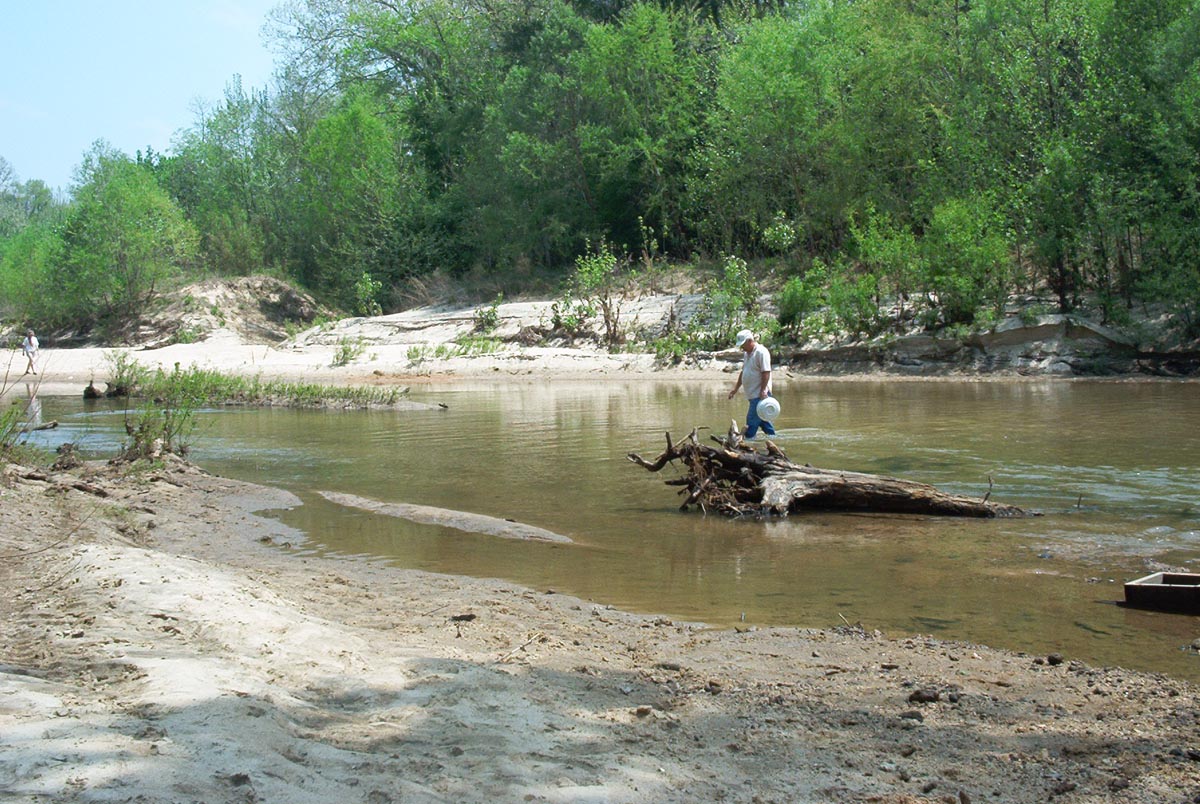
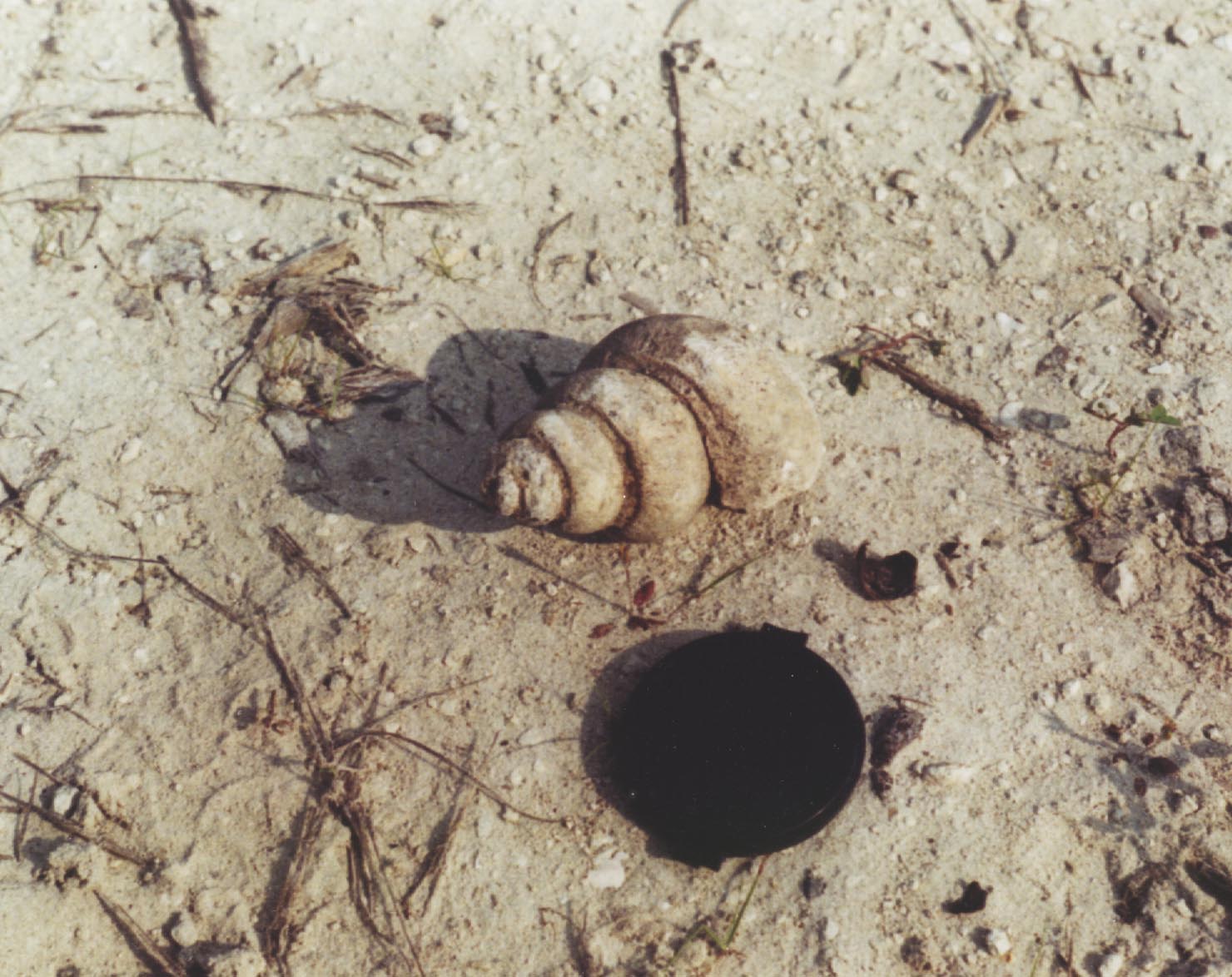
A nice gastropod found on the "bald" hilltop.
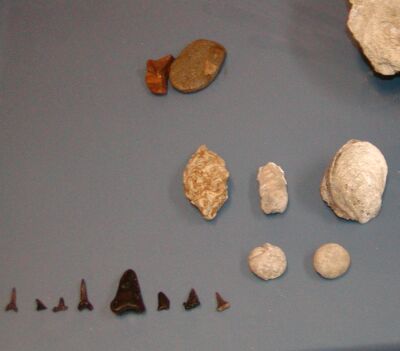
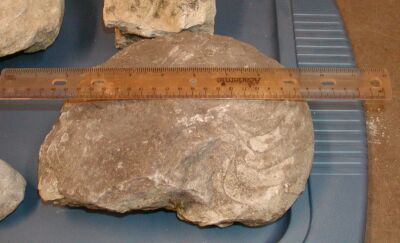
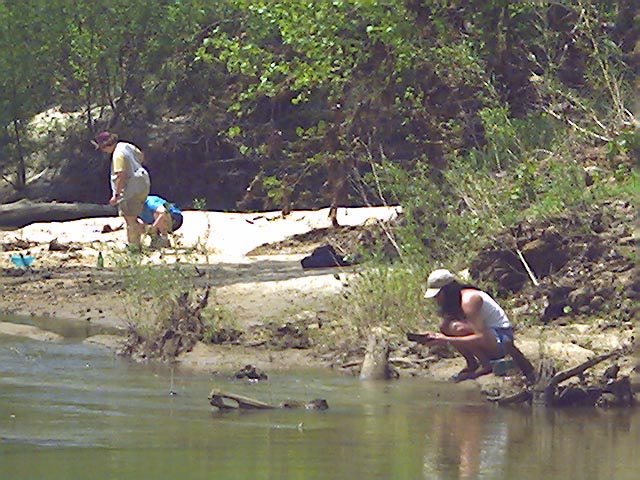
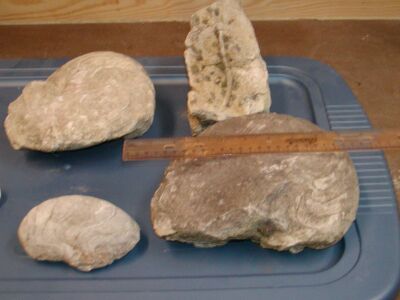

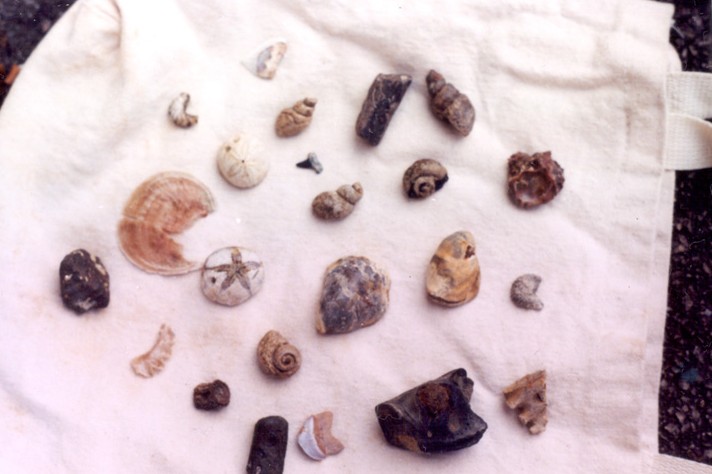
May 31, 2003 - Cretaceous Fossils, Greene Co, AL
(Photos courtesy Greg Mestler and Vicki Lais.)
Pages
June 21, 2003 - Carboniferous Fossils, Jefferson Co, AL
BPS members visited 2 areas of new road development and a small quarry in Jefferson County this month, making 3 stops total. We had not visited these locations before, so were not sure how prolific the sites would be.
(Photos courtesy Greg Mestler, Ron Beerman, and Vicki Lais.)
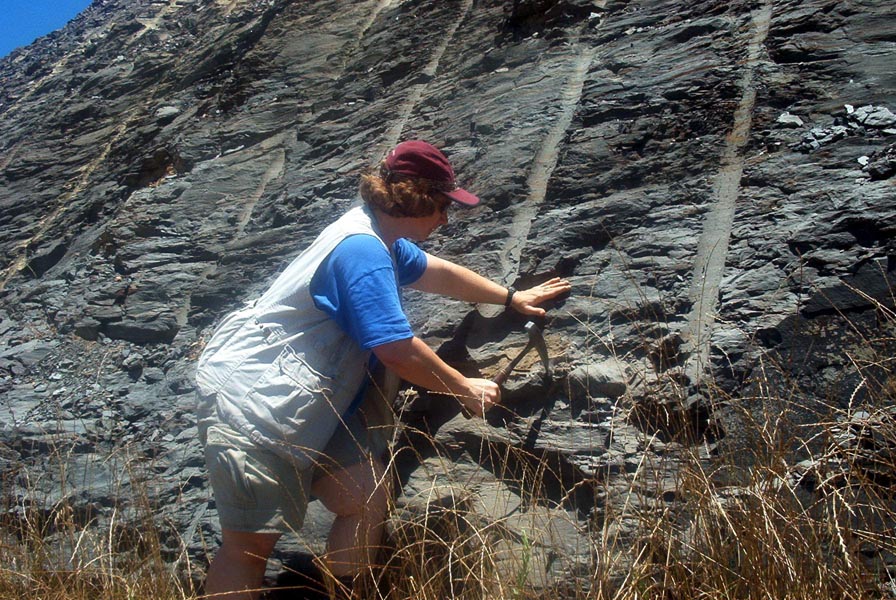
At stop #1, several brachiopods and a couple of slabs with small amphibian track prints were found.
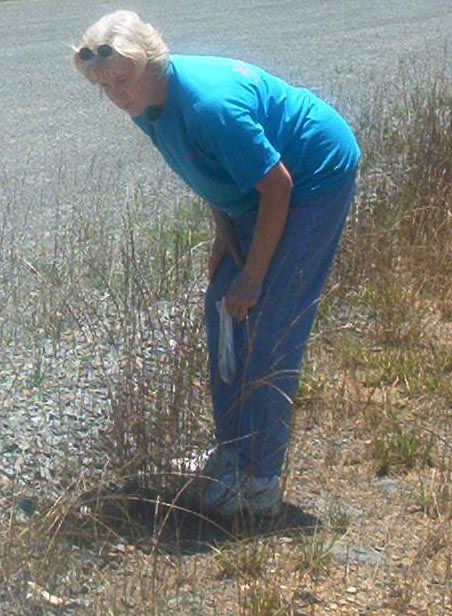
Jan found a number of brachiopods at this spot.
At stop #2, a number of nice limpets (gastropods) were found.
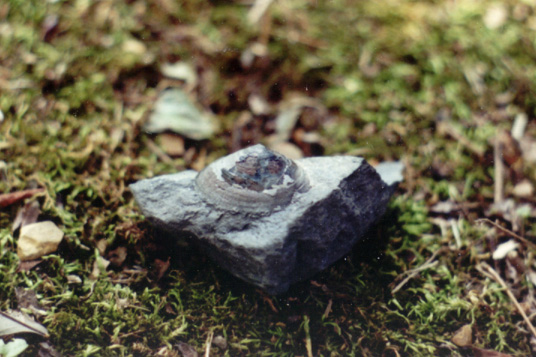

How's this for service? First time we ever had roadside delivery!
At stop #3, a number of plant fossils were found at a local quarry.
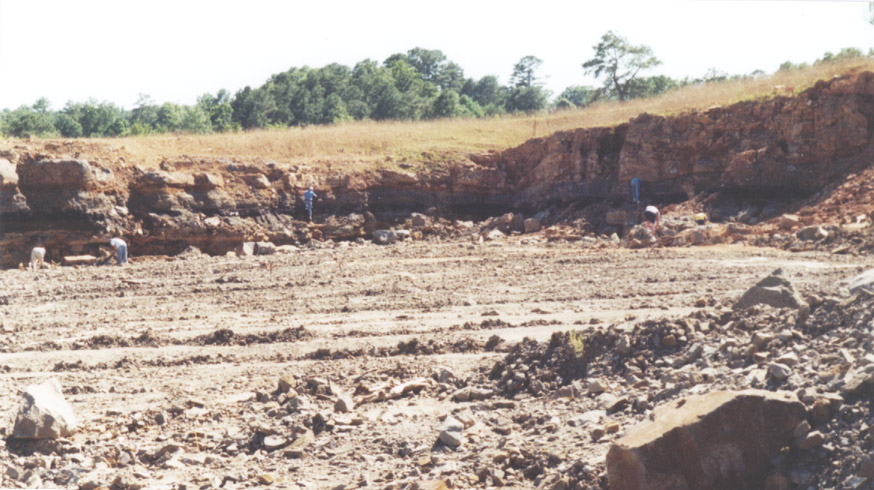
Picture of Calamites found just above a coal seam at one of the sites visited. It measures 101mm in diameter (approx 4 inches) and 304 mm (12”) in length. This cast of the central pith-cavity of the trunk is a very common fossil of Calamites. It is characterized by the articulation and the vertical ribbing between the nodes. The ribs are the imprints of the vascular strands. It measures 101mm in diameter (approx 4 inches) and 304 mm (12”) in length. This tree, in size up to 20 meters, grew during the Carboniferous period, about 320-350 million years ago. (This specimen found by Ron, Claire got the other half, which is about the same size.) |
|

Stigmaria Ficoides. This is a fossilized root of the Sigillaria tree. This piece measures 102 mm by 114 mm. It was found near a coal seam. This plant lived during the Pennsylvanian Period of the Paleozoic Era 320-350 mya around swamps or lakes grew to several meters in height. Its modern day relatives are the small club mosses and lycopods. The round nodes on the surface of stigmaria are scars where rootlets were once attached and arranged in a radial fashion about stigmaria like the bristles of a bottle brush. During their life these trees shed parts of their outer bark.
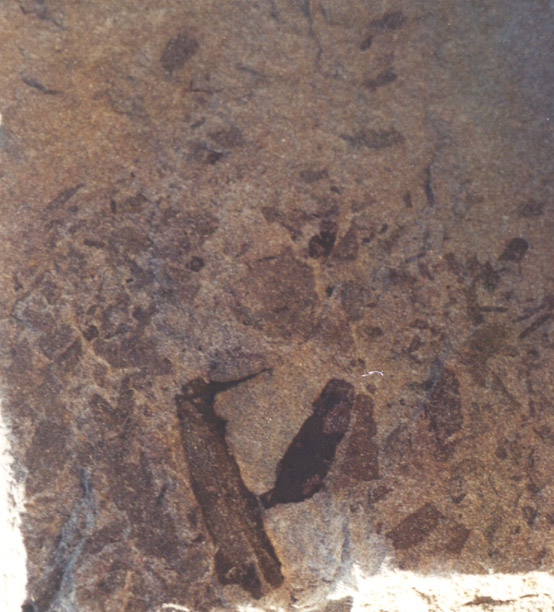
Possibilities - a spore case, or Neuropteris leaf.

Leisa & Winnie discussing the current find.
Some fern material found at the site is shown below.
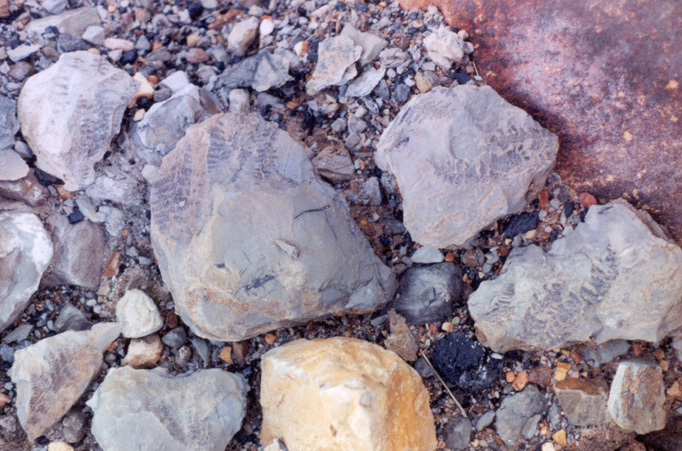
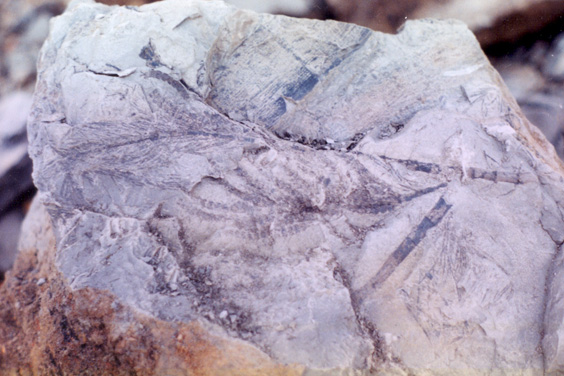

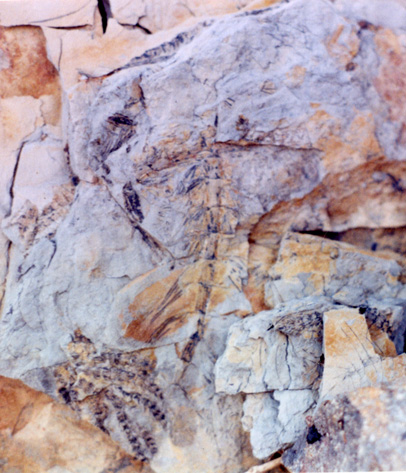
July 26, 2003 - Cretaceous and Pleistocene Fossils, Greene Co, AL
We had so much fun at this site back in May, we wanted to do it again, and search for more mosasaur bones. And we were in luck! 2 more large vertebra were found, and 2 pieces of jawbone, one with pieces of the tooth still there, however, we did not find where they were washing out, but we all had a great time scouting. This site in Greene County, AL is characterized by large quantities of pea gravel. Going east along the creek one is in Pleistocene age material, while going west moves one through an area of Mooreville Chalk (Cretaceous).
A number of teeth from Scapanorhynchus Texanus were found by all. This shark, also known as the Goblin shark, was thought to have been extinct until it was re-discovered in the late 1800s off the coast of Japan. Its living relative is referred to as Mitsukurina Owstoni. The sharks most dominant characteristic is its long protruding snout. Living species frequent the greater depths around 1000’ or more. Scapanorhychus is estimated to have reached lengths between 3-5 meters (10-17 feet).
Its teeth are varied in shape depending on their position within the jaw. Anterior teeth are identified by their high arched bilateral roots, as shown in figure 1 below. The teeth themselves have prominent longitudinal striations running from the top of the cusp up most of the way of the inner curve. According to some sources, some anterior teeth may have tiny lateral cusplets, however not which were found exhibited this characteristic. Many of the anterior teeth (excluding root) found ranged between 2.5 to 3.5cm.
Lateral teeth, shown in figure 2 below, are much different than the anterior teeth. They are triangular in shape and have cusplets on each side of the tooth. The roots are more flattened and lack the arch that the anterior teeth possess.
--Edited by Vicki Lais
(Photos
courtesy Ron Beerman and Vicki Lais)
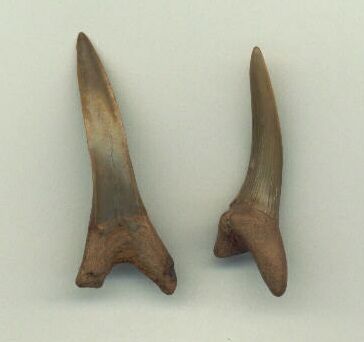 |
|
| Figure 1 | Figure 2 |
The second type of tooth found at this site was identified genus Squalicorax. Not enough information nor specimens were collected to specify the species at this time. Squalicorax, or crow shark as it is commonly known as, was believed to be both a predator and a scavenger. Fossil evidence seems to indicate that this shark grew to a length or 4.5 meters (15 feet) or more. Fossil teeth from this shark have been found in Europe, North Africa and North America. Some of the Squalicorax teeth found are shown below in figure 3.

More photos of the trip:
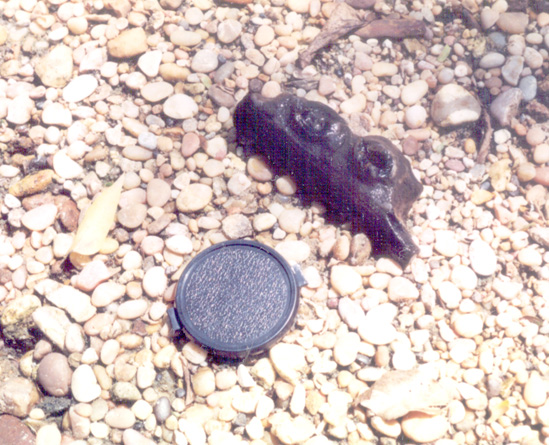
Jawbone found by Vicki.
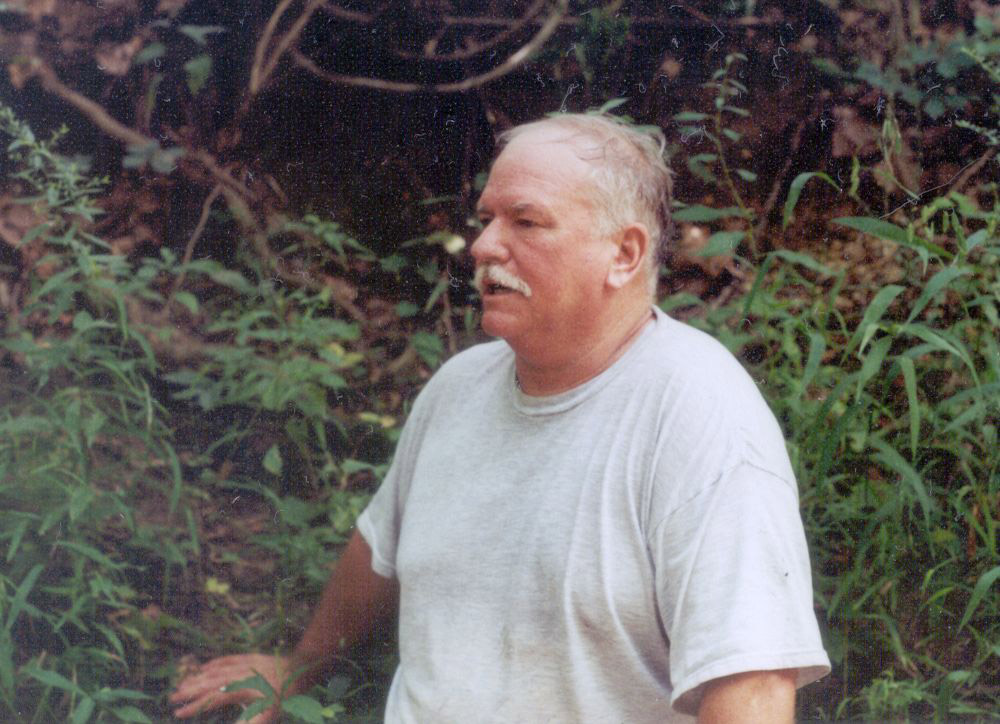
Greg
describing the geology of the site.

Claire's stash, above.
And Vicki's stash, below:

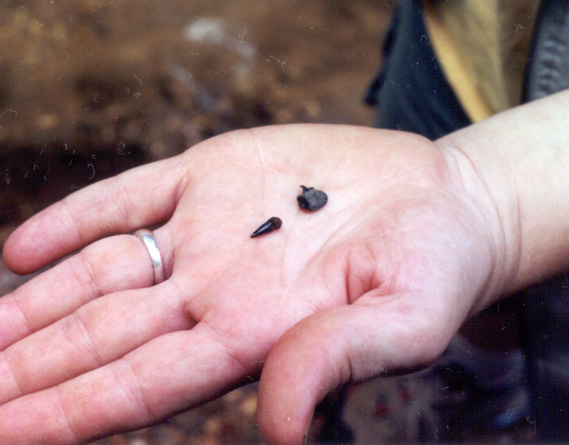
Tiny teeth; fish tooth on left found by Vicki, tooth in jaw bone found by Claire.

View up the creek.
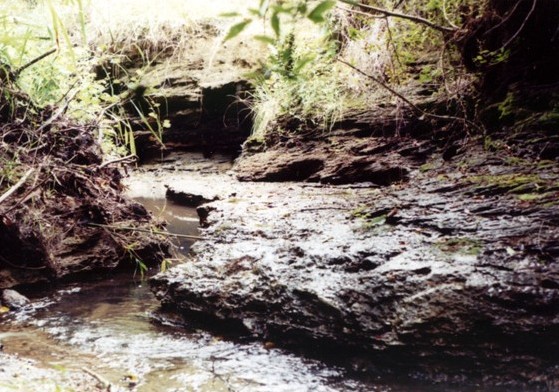
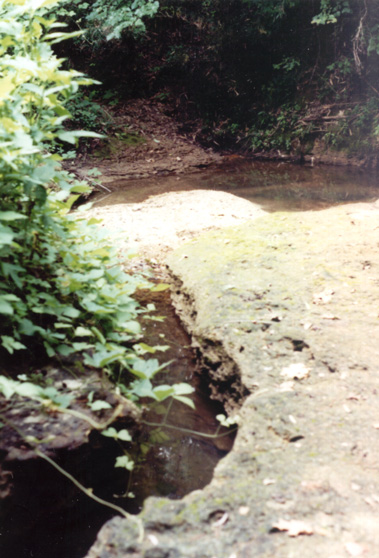
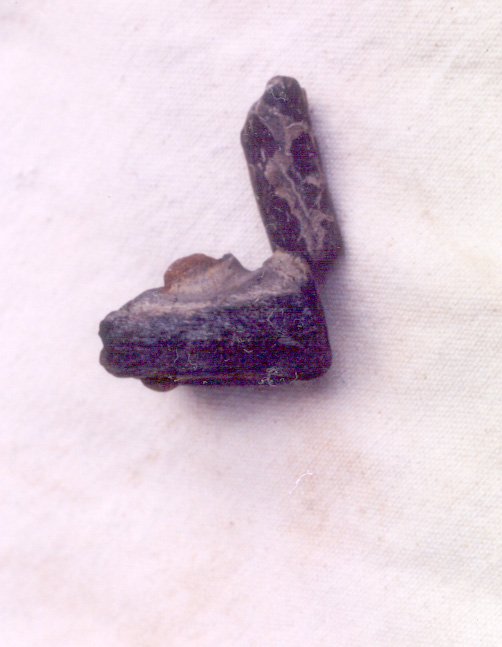
Another
jaw part with portion of tooth.


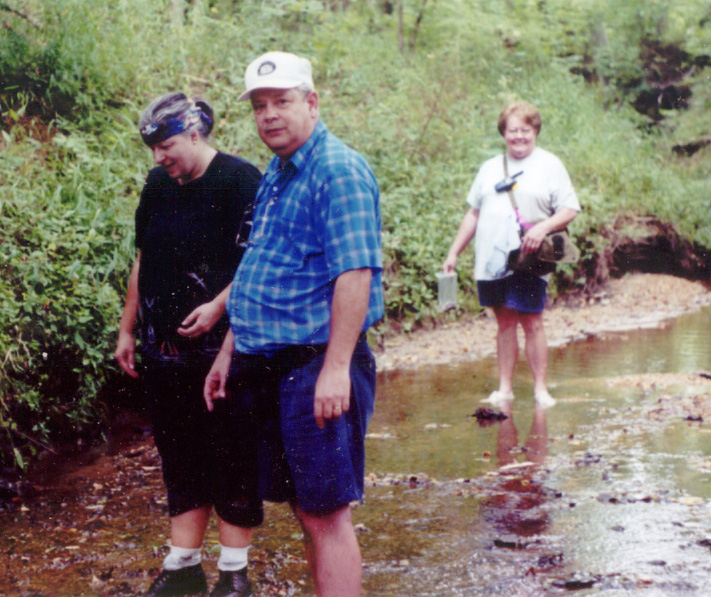

Way down the creek. Mooreville chalk can be found in this area.
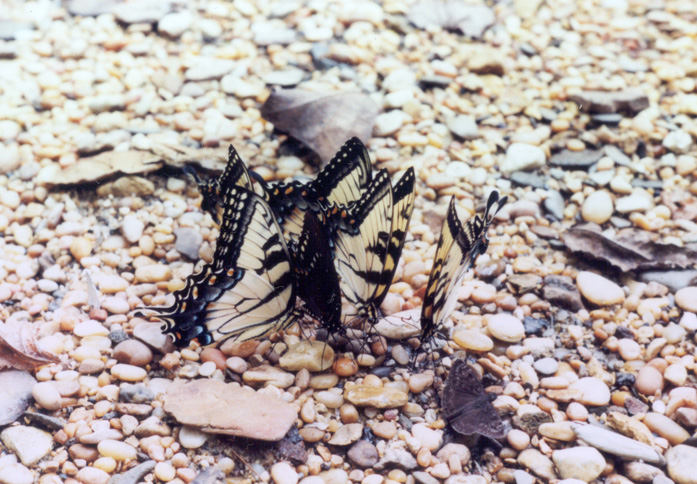
August 16, 2003 - Rummage Sale, Jefferson Co, AL
The rummage sale went very well, and generated a few hundred dollars for the BPS treasury. Several weeks of preparation was hard work, but the actual day of the sale was a lot of fun. Leisa was able to obtain a location on the main drag through Gardendale, Alabama, so even without any advertising, and in spite of our dragging our feet and sleeping in that morning, we had a lot of business. A BPS educational table was set up, where numerous fossils were displayed, along with books about fossils, field trip photos, and several "give-away" fossil and mineral samples. We passed out numerous BPS flyers and had many opportunities to talk about our favorite subject. One of our customers brought a large piece of petrified wood for our collection, though he did not know its origin. He also makes interesting puzzles, and gave one to Claire (it has to do with balancing 6 nails on top of one nail.) (Sorry there aren't many pictures, we were too busy helping customers and talking about BPS!)
(Photos courtesy Vicki Lais)
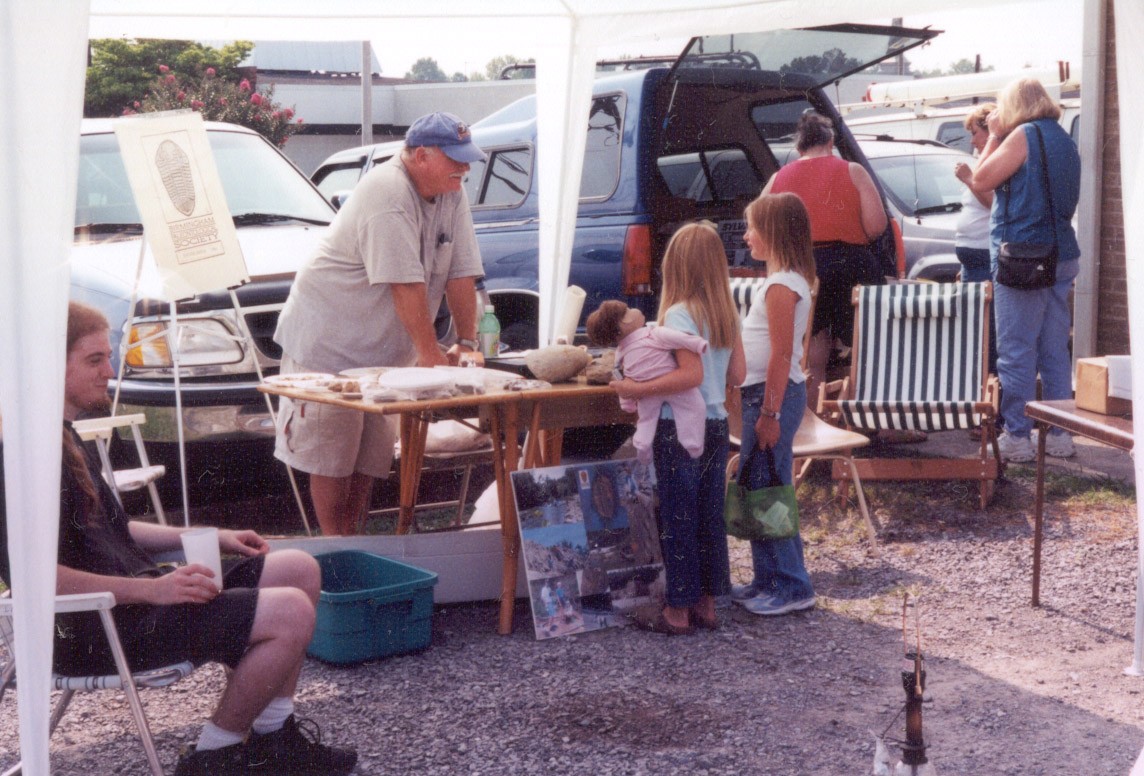
Greg talking to some of our visitors about BPS and fossil collecting. Several of our better finds were displayed, and there were give-away samples of various types, including ferns, echinoids, shark teeth, and some mineral specimens.
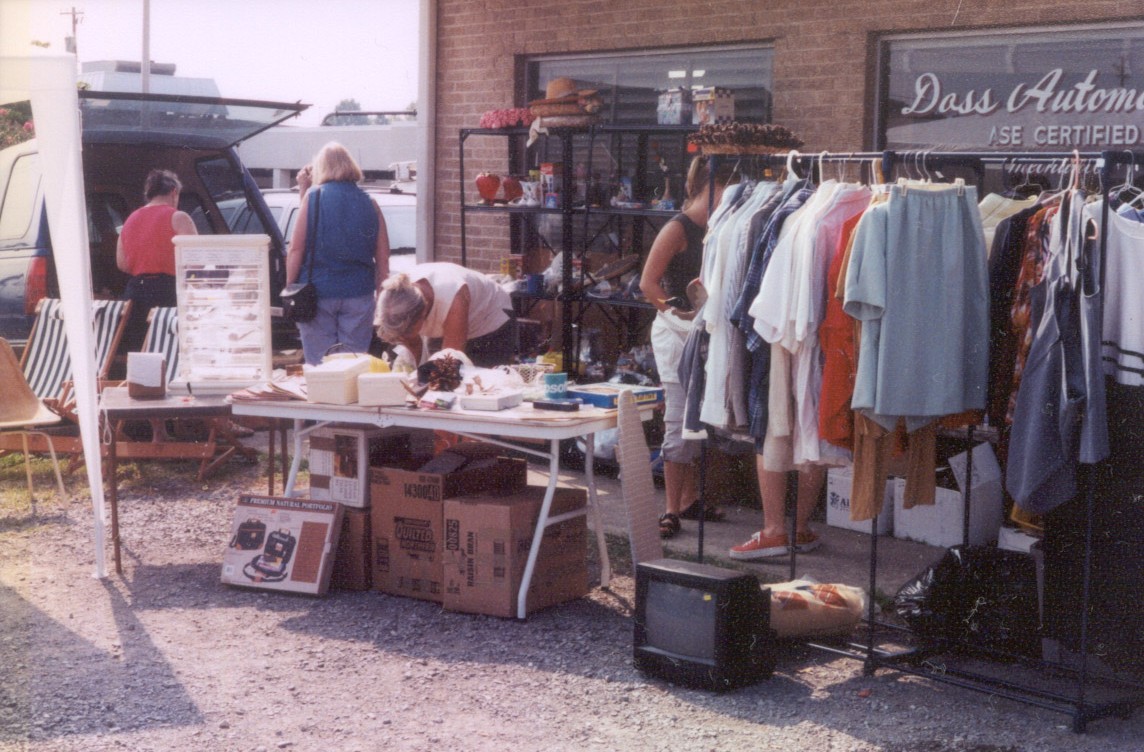
Customers and merchandise.

Another view of customers and merchandise.
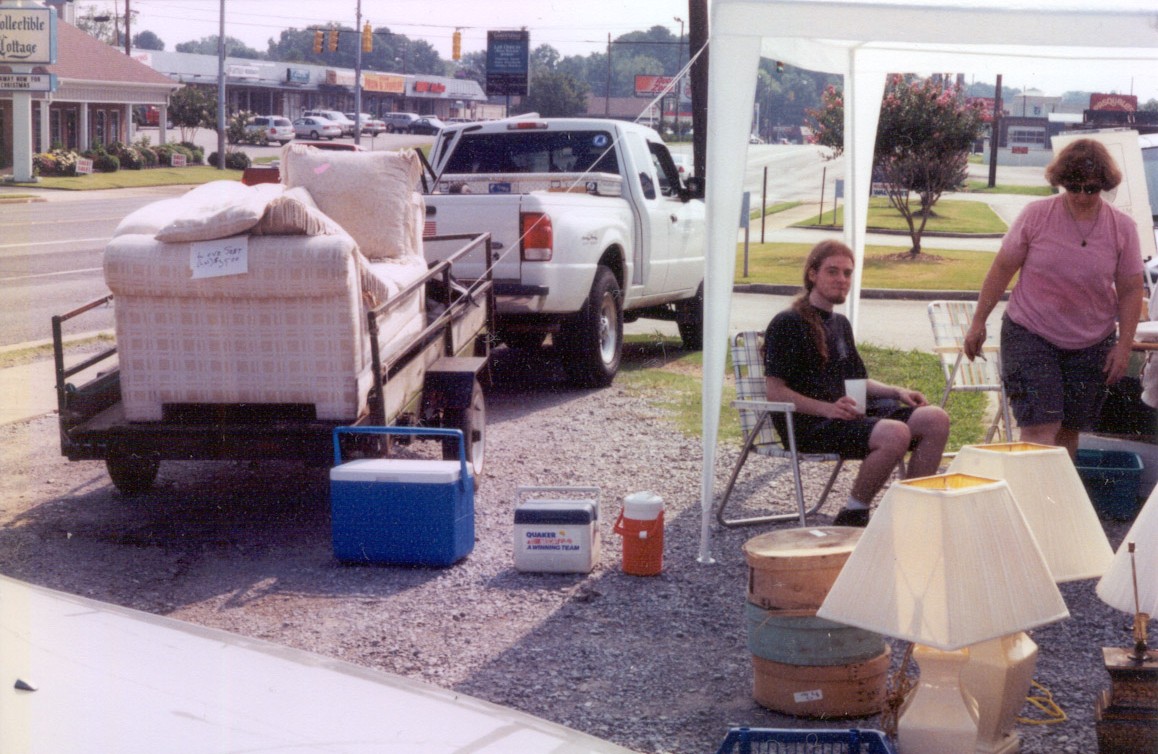
Chris and Claire.
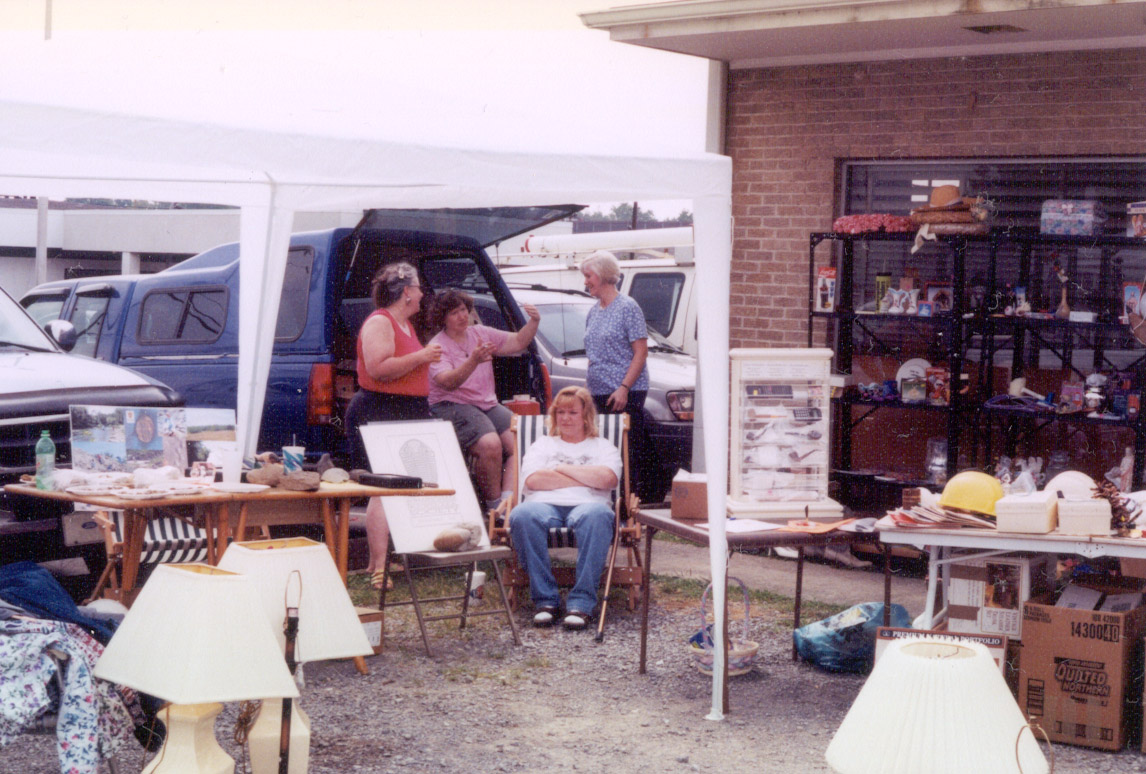
Taking a break.
August 23, 2003 - Butler and Covington Co, AL
Several of us
proceeded on south to Point
A Dam for the late evening. The water was being released, so
the
normal collecting area was underwater, however, Claire found a new area
that was very productive.

Searching on the ridge for nautiloids and gastropods.

Playing
in the sand. Creek is much higher than on our last trip.

Steve had some good finds screening.

Robert found a nice nautiloid.

Another view of the nautiloid, being held by Kate.

A beautiful
arrowhead was found.

Jonathan found a very nice piece of incised pottery.

Becky looking at her finds.


September 27, 2003 - Sumter Co, AL
After a quick
afternoon thunderstorm,
several members and guests went further south to Epes.
Numerous
marcasite and
calcite crystals were found. But the find of the day was a
plesiosaur limb bone found by Ron, that appears to have been chewed on
by a shark. How exciting to have found a possible relative of Nessie,
the Loch Ness monster, right here in Alabama!
(Photos
courtesy Claire Smith and Vicki Lais)
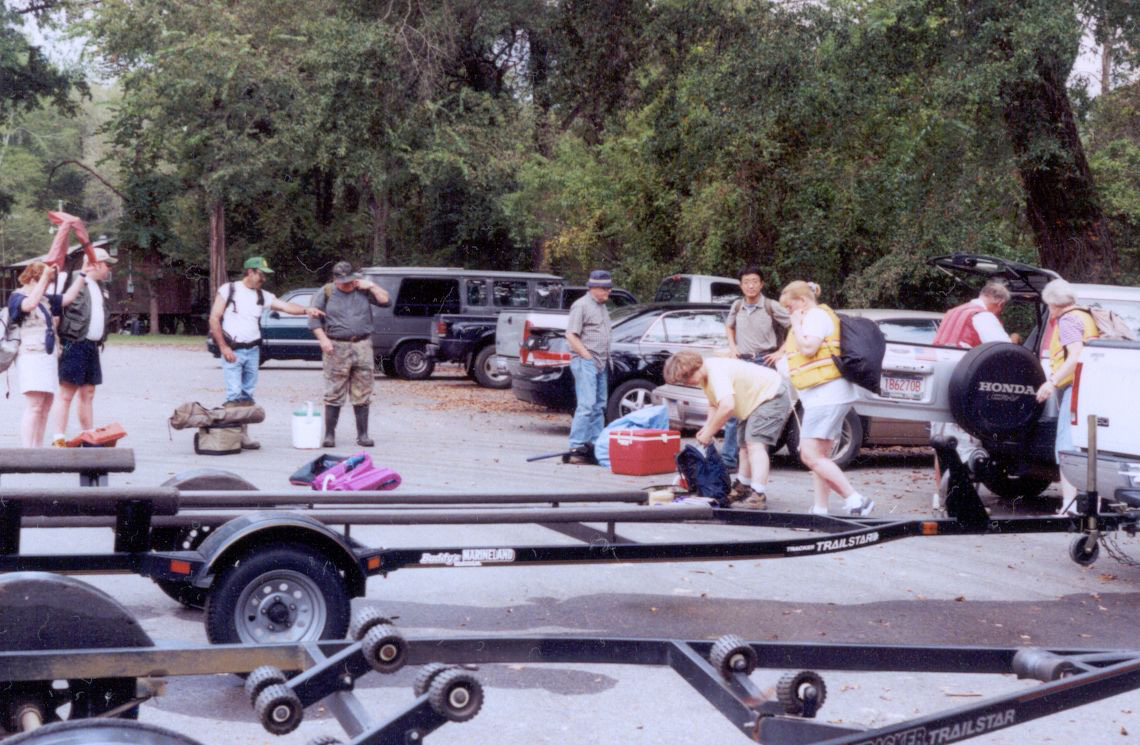
Getting ready to head down the river.

View of the bluffs from the water.


Eager students listening to Dr. Smith lecturing on this site.
He
has published numerous articles on the Arcola Limestone Member (Upper
Member of the Mooreville Chalk), and the nannofossils found in it.


One of the very nice gastropods found at this site.


Slippery when wet...

Lunchtime
slowdown..
Some of you may get a little wet. . . ..



After the afternoon shower, some members and guests decided to head
south to Epes.

Ron
found the specimen of the day! James Lamb, Curator of Paleontology at the McWane Science Center, personally
examined this specimen and identified it as a plesiasaur limb bone,
with some shark teeth bite marks. It is the elbow joint of
the
humerous.
October 25, 2003 - Franklin Co, AL






The one that got away. We discovered on our next trip that someone had come behind us and popped this one off.


Back side.....

Front side.
November 22, 2003 - Dallas Co, AL






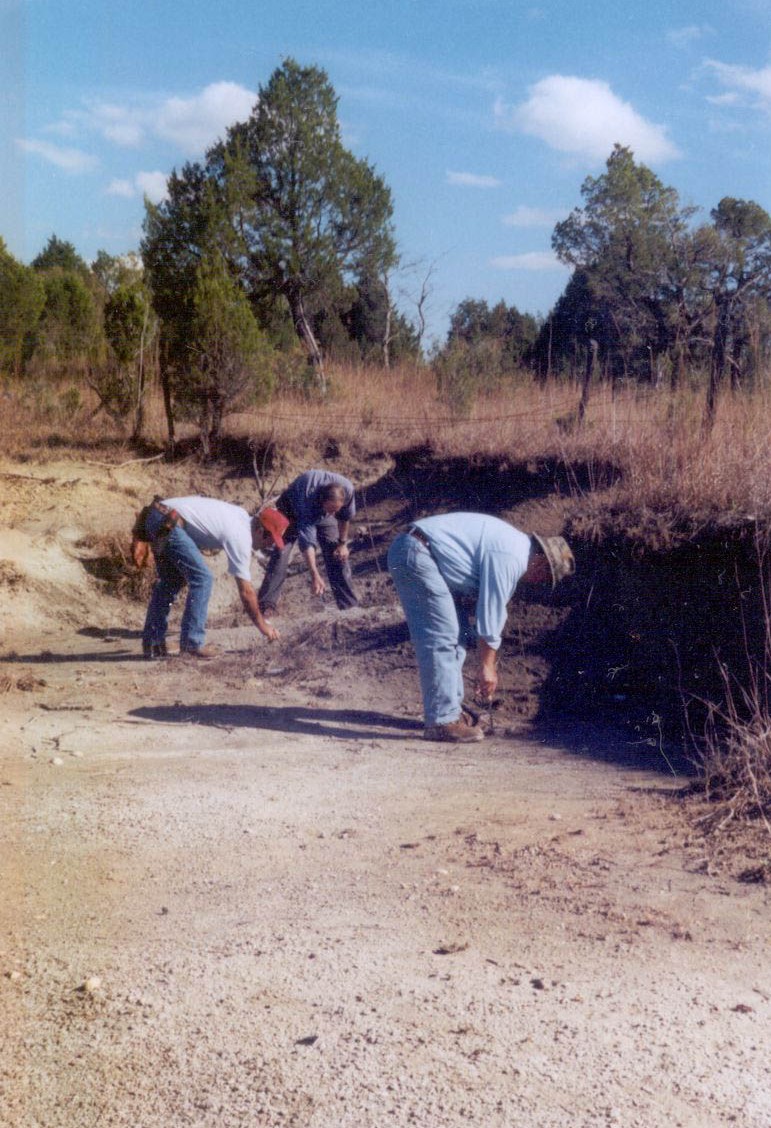
Those toe touches will wear you out. . . But those shark teeth sure are worth it!


Steve and Greg excavating the mosasaur bones.
December 20, 2003 - Franklin Co, AL
Our activity for December was the annual BPS
Holiday Party, this time
held at the home of Judy and Bill Lewis. They are fabulous hosts,
and have a house built for entertaining. Their numerous trips
to
exciting locations around the world, and the treasures they have
collected made for interesting conversations. Also, a number
of
members greatly enjoyed the pool table downstairs!
Bill was
in for a surprise. He hasn't been attending outings or
meetings,
but discovered that his favorite hobby, fly fishing, was shared by most
of the men attending. He also found out many of our sites are
found on fishing trips - I suspect we have another convert!
There was no official BPS outing this month, but several
members
participated in a "Scouting Outing". We took boats back to
Franklin county, and scouted numerous spots around the lake.
Some
nice finds, but from debris piles, saw marks, and 4 wheeler tracks, it
appears that there has been some serious collecting going on around
this
lake. One site that had been scouted about 3 years ago as a
promising site, was virtually void of fossils now.
Some common fossils found around the lake are shown below.
(Photos courtesy Vicki Lais)

Gastropod and ostrocods.

So much lakeshore, so little time....

So where do we go next, guys?

A wonderful day of exploring. Had fun. Goodbye - see you next time!


